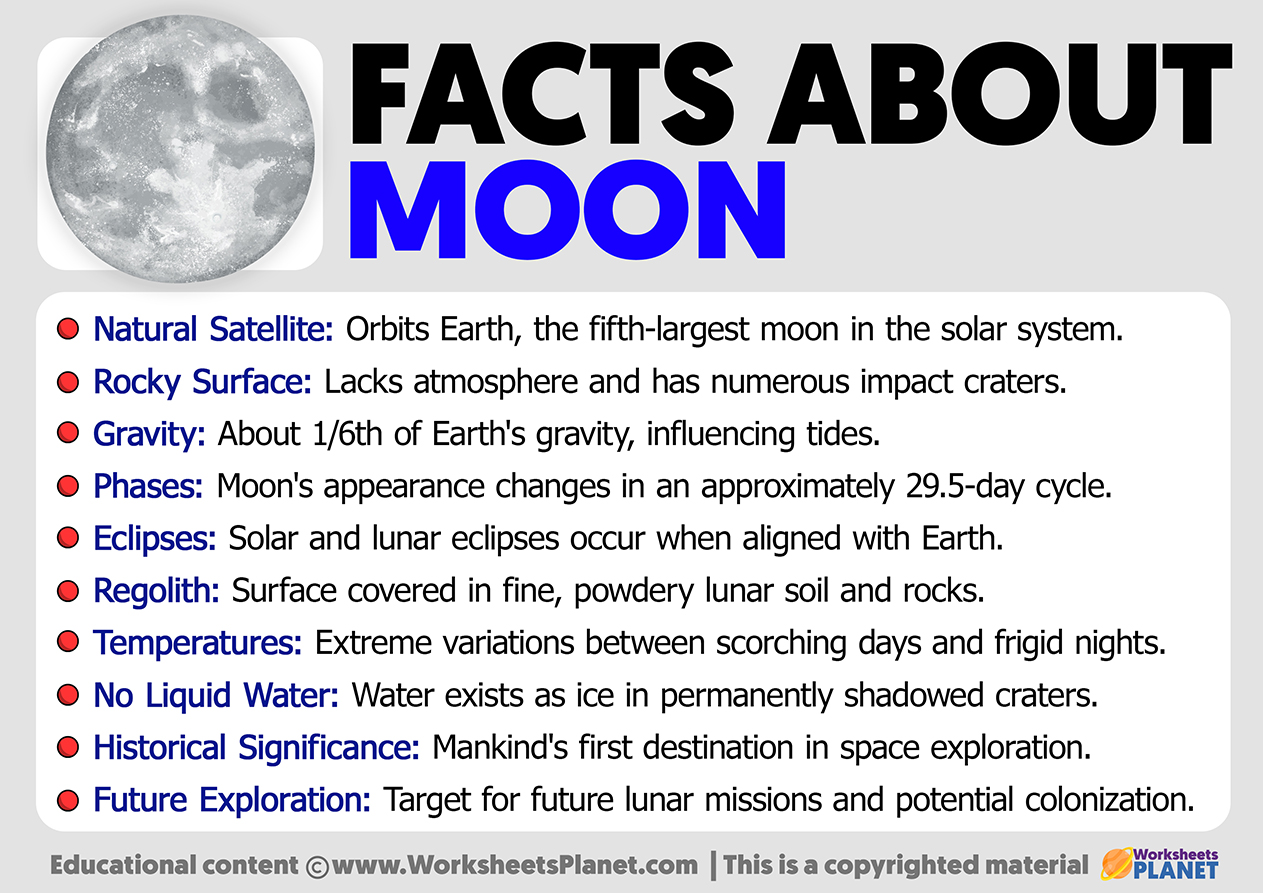The Moon is Earth’s natural satellite, not a planet. It orbits our planet, serving as a constant celestial companion. It influences tides and has been a target for human exploration, with missions like Apollo landing astronauts on its surface, advancing our understanding of the cosmos.

- Natural Satellite: Orbits Earth, the fifth-largest moon in the solar system.
- Rocky Surface: Lacks atmosphere and has numerous impact craters.
- Gravity: About 1/6th of Earth’s gravity, influencing tides.
- Phases: Moon’s appearance changes in an approximately 29.5-day cycle.
- Eclipses: Solar and lunar eclipses occur when aligned with Earth.
- Regolith: Surface covered in fine, powdery lunar soil and rocks.
- Temperatures: Extreme variations between scorching days and frigid nights.
- No Liquid Water: Water exists as ice in permanently shadowed craters.
- Historical Significance: Mankind’s first destination in space exploration.
- Future Exploration: Target for future lunar missions and potential colonization.

